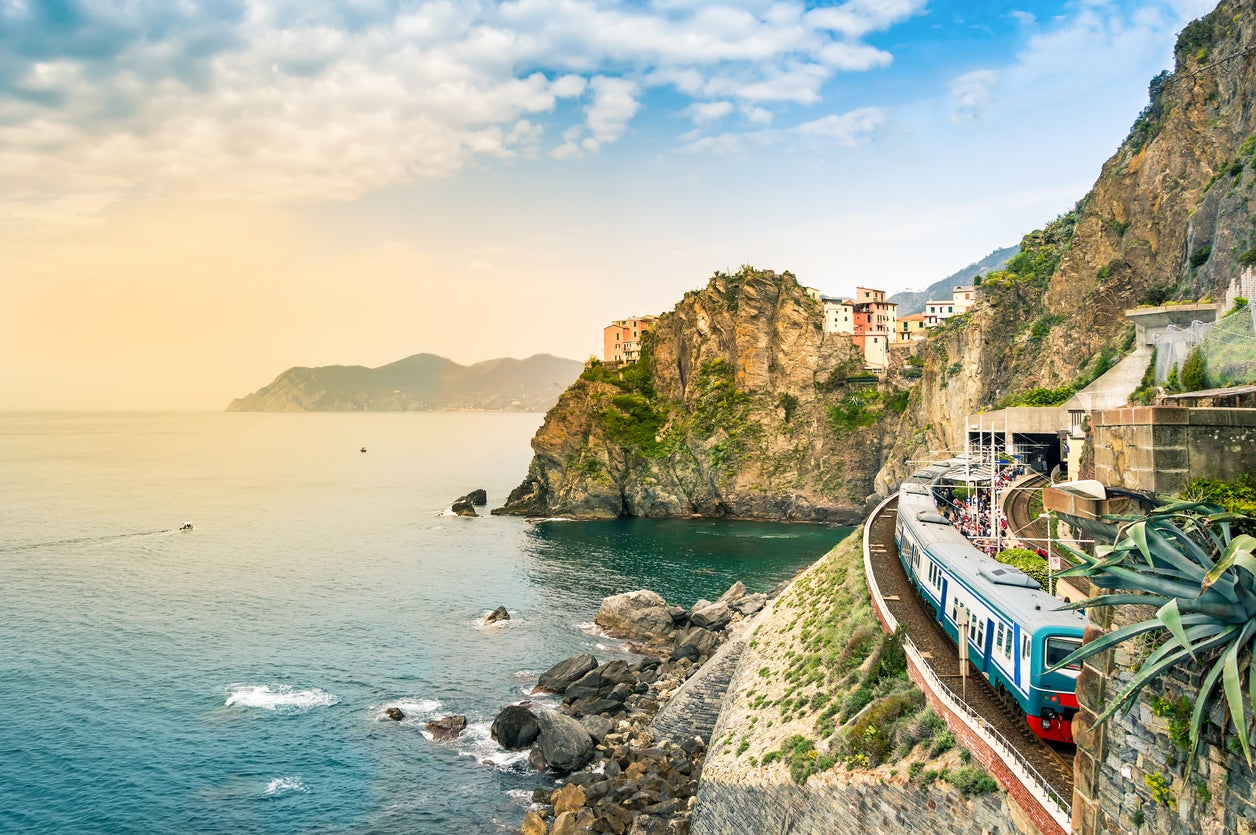How to travel by train across Italy
Slower trains are cheaper and more scenic, finds Simon Calder, so take your time absorbing the country’s beauty as you amble from city to city


Italy has the most diverse and alluring rail network in Europe. Sleek expresses race between the grand cities, while ancient rolling stock rattles around the great volcanoes of the south – Vesuvius near Naples and Etna on Sicily – and branch lines constitute triumphs of engineering in the Alps.
Travelling by train in Italy has multiple benefits. Besides avoiding the chaotic roads (and the Machiavellian restrictions when you so much as think about driving or parking in the historic centre of a city), you are guaranteed constantly changing views and engaging fellow passengers.
Rail journeys can also be extremely good value. The 70 spectacular minutes aboard the Circumvesuviana from Naples to Sorrento, curving around one of Europe’s most magnificent bays, costs just €3.60 (£3.30).
If time is on your side, I commend the ordinary trains – typically branded Regionale or (slightly faster) Regionale Veloce. They usually offer plenty of space and a lilting journey through lovely countryside, and are cheap as well as cheerful. You can make things up as you go along, too.
The two-hour-plus, 100-mile journey between Venice and Bologna (the key rail hub in north-central Italy) is just €13 (£11.80) for a walk-up ticket.
For longer distances and faster journeys, though, Italian rail travel requires advance planning and careful buying.
Unlike Italian air travel, where the government’s focus seems exclusively on keeping Alitalia going whatever the cost to taxpayers and rival carriers, rail passengers benefit from flourishing competition on inter-city routes.
For immediate travel between Milan and Naples you can pay €75 for a “classic” inter-city, nine-hour journey, or nearly twice as much for a Frecciarossa high-speed train taking half the time. These are both run by Italian State Railways. It is best to book these services in advance for tickets that cost typically €70 when bought a month ahead.
But before you commit, see what Italo is offering. This is the competing high-speed operator, using the same tracks and typically slightly undercutting the state operator; lower frequency and lower prices.
Ticket checks take place on trains, rather than at stations. Increasingly station machines and booking offices dispense tickets for specific trains. But when you get a standard cardboard ticket, you must cancel it at the departure station by finding the right machine – generally yellow or green, and usually at the entrance to the platform. Failure to do so is held to be equivalent to non-payment, though foreigners are occasionally let off the heavy financial penalty.
Finally, the wise rail traveller in Italy takes their time. You can travel the 60 miles between Florence and Bologna on a high-speed train in 32 minutes flat – but it is a joyless experience, being mainly underground.
Far better to take the one-change journey via Prato Centrale, which takes at least an hour longer but proves far more rewarding. Slow travel, like slow food, is at its best in Italy.
Join our commenting forum
Join thought-provoking conversations, follow other Independent readers and see their replies
Comments
Bookmark popover
Removed from bookmarks